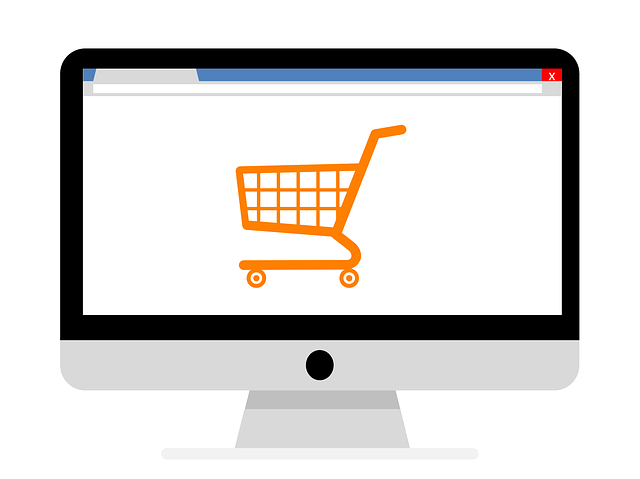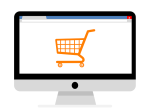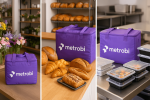2025 brings a curious shift in shopping behavior. Business owners now face a stark reality: 73% of consumers switch between online and physical stores multiple times before making a single purchase online. This isn’t just about where people buy – it’s about how businesses survive in the evolving landscape of online shopping vs in-store shopping.
Think about your last purchase. Did you check prices online first? Or did you want to touch and feel the product in person? The lines between digital and physical shopping are getting thinner. Some business owners stick to one channel, missing out on $2.3 trillion in cross-channel sales opportunities.
The truth? Neither online shopping nor in-store shopping wins alone anymore. The real victory lies in understanding how consumers make decisions across both channels. A business owner in Seattle recently doubled her revenue by merging her online shopping store data with in-store shopping customer behavior patterns. She noticed that 40% of her online shopping browsers became in-store buyers within 48 hours. To navigate these changes successfully, businesses must embrace robust strategies that cater to consumer preferences. Effective omnichannel marketing is essential to reach local customers where they are. By integrating various marketing channels, businesses can create a seamless experience that supports their customers’ journey both online and in-store. Investing in these strategies is vital for success in today’s retail environment, and you can learn more about effective approaches in a detailed guide on omnichannel marketing.
But here’s what matters in 2025: Consumers don’t just want options – they demand seamless experiences. They expect to start their holiday shopping journey on their phone and finish it in your store. Or browse in-store shopping and buy online. The businesses that understand and adapt to this behavior – and navigate the nuances of online shopping vs in-store shopping – are the ones that will stay open. To gain more insights into merging online and offline retail strategies effectively, check out this article on how to create a successful Brick-and-Click retail approach. It explores the strategies that can enhance customer experiences across both channels.
This guide breaks down exactly how consumer decision-making has changed in 2025. You’ll learn specific strategies that successful businesses use to blend online and offline presence. Most importantly, you’ll understand why some businesses grow while others struggle in this new retail landscape.
Save 80% of delivery management time
We handle everything:
- Dedicated operations manager
- Real-time tracking dashboard
- Automated customer notifications
- Urgent issue resolution
Mastering Consumer Decision Making: Online Shopping vs In-Store Shopping
Consumers often decide between online shopping and in-store shopping based on price, convenience, and return policies.
Delivery speed and immediate availability impact the decision significantly.
Trust in return policies also play a crucial role.
Understand Price Sensitivity
Pricing strategies significantly affect consumer decisions. People often compare prices online before committing to a purchase. Around 95.92% of buyers check prices online before going shopping in-store. Sales, discounts, and added fees also come into play. Online platforms often tempt with digital coupons and flash sales, while physical brick-and-mortar stores might offer in-person discounts or exclusive in-store deals.
Evaluate Convenience and Accessibility
Convenience is a big deal. Online shopping offers flexibility in delivery speeds. Many companies provide next-day or even same-day delivery. Meanwhile, physical retail stores can offer immediate gratification—an item that is needed on the spot can’t beat the advantage of walking out with a purchase in hand.
Physical stores can capitalize on their ability to fix customer issues on the spot. This can mean that locations within close reach triumph in terms of accessibility, especially for in-store shoppers or for emergency buys.
Return policies also shape buying decisions. Online purchases get returned eight times more frequently than in-store buys, with 82% of online shoppers favoring free returns. Many consumers prefer to return online-bought items in person, ensuring the process remains smooth.
Winning with E-commerce vs Brick-and-Mortar Store Strategies
Enhancing Online User Experience
Fast-Loading Websites and Seamless Navigation
In our testing, speed is crucial to online sales. 83% of users expect websites to load in 3 seconds or less. A quick website not only keeps users but also boosts sales. A 1-second faster load time increases conversion rates by 5.6%. This can make or break an online store.
Personalization and Recommendations
Personalization boosts the online shopping experience. In our view, personalized suggestions help users find what they like. They keep the user’s interest and encourage more purchases.
Reviews and Ratings
Using customer reviews builds trust. Our data shows that honest feedback makes users more likely to buy. Encourage reviews. It’s an easy way to grow trust and sales.
Innovating Shopping In-Store Experiences
Engage Through Events and Offers
Stores can win by being engaging. During our visits to grocery stores, we noticed events and exclusive offers draw people in. They don’t just shop. They interact and enjoy.
Store Layout and Ambiance
The store environment matters. A well-thought-out layout and pleasant atmosphere keep customers coming back. Shoppers often return to feel the ambiance again and again for in-store purchases.
Customer Loyalty and Personalized Service
Stores can excel with loyalty programs and personal service. Programs can boost customer spending by 15-25% annually. Shopping in-store personalization wins customer hearts in ways online cannot.
The Winner: Online Strategies
Given the shift towards online shopping, online strategies edge out brick-and-mortar. E-commerce is set to account for almost 35% of all retail sales by 2025. Speed, personalization, and the worldwide reach push online retailers ahead. Still, in-store innovations remain crucial.
Future Retail Trends 2025: What’s Next?
Mixed reality enhances both online and physical shopping.
Automation and AI revolutionize customer experience.
Key trends help define consumer choices in 2025.
Rise of Mixed Reality in Shopping
Mixed reality is reshaping how people shop. Augmented reality (AR) is making online vs in-store shopping more immersive and experiential Andreas Olah, Lead Analyst at GlobalData. Online, AR tools enable virtual try-ons, allowing shoppers to see how items look before buying. This helps reduce returns and boost purchasing confidence. Meanwhile, VR and AR enhance in-store shopping by adding interactive digital interfaces and displays. This makes shopping both fun and informative.
Fashion brands and furniture retailers are already testing AR with virtual fitting rooms and home decor tools. The potential is huge. Going deeper, look into books like Digital Transformation: Survive and Thrive in an Era of Mass Extinction by Thomas Siebel. It explores the digital shift affecting various industries, including retail. For businesses, investing in AR and VR technology might be necessary to meet rising consumer expectations, though some argue costs may be high for smaller players.
Automation and AI in Customer Experience
Automation and AI technologies are transforming how retailers interact with customers. Chatbots and virtual assistants are now standard. They provide 24/7 customer service, assisting with inquiries and transactions. AI is also making significant strides in predictive analysis for inventory management. Retailers can forecast demand and avoid stockouts or overstock. This streamlines supply chains and enhances efficiency, a crucial factor in competitive retail environments.
Besides back-end operations, AI extends to front-end experiences. Personalization algorithms suggest products based on past behaviors. As one expert notes, “AI is an engine that is poised to drive the future of retail to all-new destinations…to increase productivity.” This is transforming customer expectations, making personalization almost mandatory.
Then there are robotic delivery systems and automated pickup lockers. These technologies offer contactless, efficient solutions for order fulfillment. Though still growing, interest is rising.
Hybrid Shopping Experience: Bridging the Gap for Consumers
Combines the perks of both online shopping and in-store shopping.
Personalizes shopping through tech integration.
Creates flexibility with cross-channel services.
Click-and-Collect Benefits
Click-and-collect is gaining traction, with 67% of American shoppers having used it recently. It offers several advantages:
Instant Gratification: Buyers can pick up items without waiting for delivery. This satisfies the desire for immediate product possession. 10% of all sales are projected to use click-and-collect by 2025.
Cost-Effective: No shipping fees make this a budget-friendly option for buyers and sellers. This helps in expanding reach without hiking prices.
Stock Confidence: Products are assured to be available when purchasers visit stores. This confidence in stock levels helps mitigate the resale process.
Curbside Ease: Minimal contact options like curbside pickups cater to those who prefer reduced interactions amid growing health concerns.
Cross-channel Promotions and Loyalty Programs
Integration of loyalty systems across both physical and digital shopping platforms is reshaping consumer engagement:
Unified Rewards: Providing adjusted reward systems that work in-store and online enhances consumer satisfaction. This encourages repeat visits across both buying modes.
Data-Driven Offers: Understanding shopping behaviors allows brands to tailor promotions that match consumer habits. Personalized deals play a critical role in this.
Retention Boost: Cross-channel programs not only keep customers coming back but also give valuable insights. This data helps in crafting precise marketing campaigns.
Social Shopping Platforms
Social media platforms are becoming essential for influencing buying decisions in-store shopping statistics, and connecting consumers directly with products:
Purchase Influence: Social media channels seamlessly integrate with brands, showcasing products via authentic reviews and influencer promotions.
User Content: Experiential content made by users increases trust in products, providing real-life use case scenarios.
Live Streaming: Live-streamed shopping events permit buyers to see real-time testing and demonstrations of goods. This burgeoning trend offers direct interaction and conversation with sellers.
These platforms have changed the way products are perceived and purchased. With 89% of shoppers seeking flexible pickup solutions, social platforms can couple with hybrid commerce strategies to offer the best of both worlds.
Consumer Behavior Insights 2025: Adapting Retail Approaches
People want eco-friendly products, pushing brands toward transparency.
Inflation changes spending, prioritizing essentials.
Emotional marketing becomes crucial to connect with buyers.
Influence of Sustainable Shopping Practices
The green shopping movement has exploded. Shoppers now demand products that reflect their beliefs about nature. This push is encouraging companies to rethink their products and tell consumers exactly where they’re sourced. Transparency in how items are made and delivered is crucial. It affects buying decisions directly. As sustainability grows more persuasive, brands that link with green values gain loyal consumers.
Retailers have to find eco-friendly options. Some are cutting down on waste and energy, while others focus on recyclable packaging. There’s both a moral push and a market incentive to change fast. However, achieving fully sustainable operations is tough. Costs can rise, and the logistics can be complex. Conversely prefer in-store shopping, not embracing sustainability risks alienating passionate buyers.
Understanding the Impact of Inflation on Spending
The economic landscape in 2025 is seeing shifts that affect consumer spending habits in in-store shopping. People are prioritizing basic needs over items that are seen as extra. Inflation is a key driver of this trend. For instance, prices for daily essentials have risen by as much as 5%, changing how people shop. Retailers need to adapt their pricing strategies to retain customers. Offering promotions on essential items might attract budget-conscious shoppers.
Luxury goods are feeling the squeeze, as consumers become cautious with finances. Retailers focusing solely on high-end products might see a dip in sales. On the other side, inflation might spur innovations in budget-friendly offerings or bundling strategies. But it’s a double-edged sword. Raised prices can scare off buyers if not handled carefully.
Emotional Drivers in Shopping Decisions
Emotional ties significantly drive shopping choices. People tend to stick to brands that invoke strong feelings or memories. Building such bonds can create a loyal consumer base. This is where nostalgia comes into play. Marketing reflecting past eras or familiar stories helps brands connect with buyers on a personal level. Brands that convey genuine emotion resonate more with consumers.
Storytelling in marketing isn’t just about pushing products. It’s about relating products to consumer values. Adidas used nostalgia to engage users with their classic sneaker lines, tying their history to modern trends. Critics argue this might mask the product’s core functionality. But it works by evoking emotions.
Closing Thoughts: Adapting to 2025’s Shopping Reality
The retail world in 2025 shows us that the question isn’t about doing brick-and-mortar shopping or choosing between online shopping and in-store shopping – it’s about finding the right mix for your business and customers. Business owners who understand this shift in consumer decision-making will succeed.
The key is flexibility. Physical stores are becoming tech-smart centers with AR displays and smart mirrors. Online shopping platforms offer faster deliveries and better virtual try-ons. Customers want both. They check products online before visiting stores. They visit stores to feel products, then buy online for better prices.
Smart business owners in 2025 focus on three main points: To help navigate this balance effectively, consider exploring the “Brick-and-Click” retail model. This approach emphasizes combining the strengths of both online and in-store shopping to enhance customer experiences and drive sales. Embracing this hybrid model can offer your business a significant advantage in the evolving retail landscape. Discover more about how to combine online and physical retail methods in this insightful article about Brick-and-Click retail.
Making both channels work together seamlessly
Using data from both online and offline sales to improve service
Creating personal experiences that work across all platforms
The future isn’t about picking sides. It’s about creating a shopping experience that fits how people shop in 2025. For business owners, success comes from watching customer behavior and adjusting quickly to changes. To further enhance operational efficiency, implementing effective inventory management practices is critical. One approach to consider is updating your cycle counting methodology, which can help streamline your processes and improve accuracy in stock levels. For detailed tips on this, check out our guide on optimizing your operations through cycle counting.
The most successful businesses don’t see this as online shopping versus shopping in-store anymore. They see it as one connected shopping experience that meets customers wherever they are. In light of these shifts, adopting a hybrid business model can propel businesses towards sustained success by effectively merging online and offline strategies.













